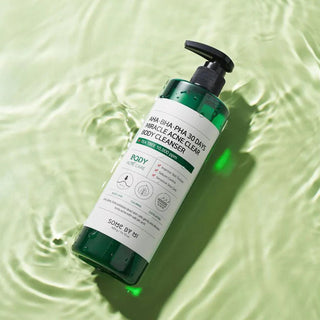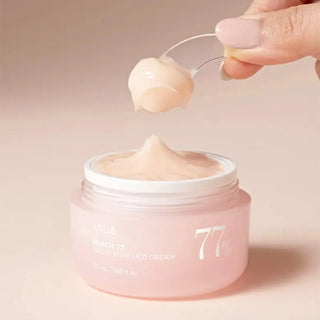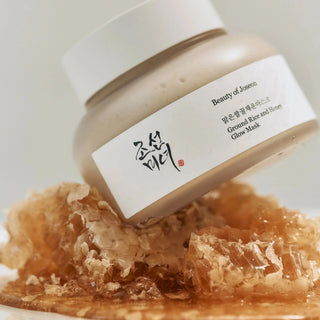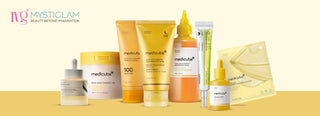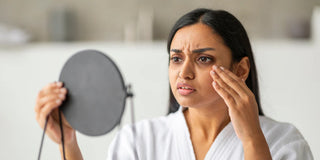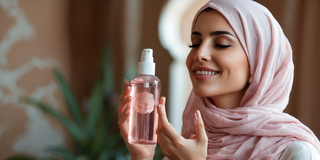If you’ve ever felt overwhelmed by your skincare shelf, you’re not alone. With so many products, it can be confusing to know in what order to do skincare correctly. Skincare layering is the art of applying products in a thoughtful sequence, allowing each one to absorb fully and work effectively. The essential rule is to apply products from the thinnest to the thickest consistency so that water-based serums penetrate deeply before creams or oils create a protective barrier.
For beginners, knowing the proper skincare order is essential. In this guide, we'll break down the steps of a complete morning and evening routine, explain the role of each product, and provide practical tips to help you get healthy and radiant skin with minimal guesswork.
What Is Skincare Layering?
Skincare layering refers to applying products in a deliberate sequence based on their consistency and function. The goal is to allow each product to fully absorb into the skin so that it can perform optimally. The golden rule is simple: start with the thinnest, most water-based products and finish with thicker creams or oils. This guarantees that each layer penetrates properly and your skin receives the full benefit of every formula.
Benefits of Layering Products
- Maximizes Effectiveness of Active Ingredients: When applied in the correct order, serums and treatments can target concerns, including dullness, uneven tone, and fine lines, without being blocked by heavier products.
- Prevents Product Wastage: Applying a thick cream first can create a barrier that stops lighter products from absorbing, reducing their impact.
- Improves Skin Hydration and Protection: Layering creates a multi-step shield, locking in moisture while also defending against environmental stressors.
Understanding this concept is essential for anyone who wants to achieve radiant, healthy skin while avoiding irritation or ineffective routines. Explore Korean cosmetics in the UAE at our online store to find beginner-friendly options for building a perfect skincare routine.
Understanding Product Types and Their Roles
1. Cleansers
Cleansers wash away excess oil, debris, and buildup, which gives your skin a fresh base for the rest of your routine. Gel and foam cleansers work well for oily skin, cream-based cleansers are gentle on dry skin, and oil cleansers are perfect for removing makeup and sunscreen residues.
How to Choose Based on Skin Type
- Oily Skin: Gel or foam cleansers help control excess oil without stripping the skin.
- Dry Skin: Cream or milk cleansers add moisture while cleansing.
- Combination Skin: A gentle, balanced cleanser prevents overdrying and keeps the T-zone under control.
- Sensitive Skin: Fragrance-free, soap-free cleansers reduce irritation risk.
2. Toners and Essences
Function in the Routine
Toners restore the skin’s natural pH and remove any leftover residue from cleansing. Essences provide hydration, helping the skin absorb serums and treatments more effectively.
Difference Between Toners and Essences
While toners mainly prep the skin and control oil or refine pores, essences are lightweight, nutrient-rich liquids that penetrate deeper, supporting hydration and cellular repair.
3. Serums and Treatments
Targeted Solutions for Specific Concerns
Serums are highly concentrated treatments that address specific issues like hyperpigmentation, fine lines, or dullness. Treatments may include retinol, vitamin C, peptides, or hyaluronic acid for targeted care.
How to Layer Multiple Serums Without Irritation
Apply the thinnest serums first and wait 30 to 60 seconds between layers. Avoid combining highly reactive ingredients that may trigger irritation. Always monitor your skin's response before layering more than one active.
Moisturizers
Role in Locking in Hydration
Moisturizers seal in previous layers, keeping skin hydrated and protected. They strengthen the barrier, preventing water loss and supporting overall skin health.
Choosing the Right Texture for Your Skin
- Oily Skin: Lightweight gels or lotions absorb quickly without adding heaviness.
- Dry Skin: Rich creams or emollient-based formulas provide extra nourishment.
- Combination Skin: Adjust textures for different areas; lighter on the T-zone, richer on cheeks.
Sunscreen and Daytime Protection
Importance of SPF in Daily Routine
Sunscreen is non-negotiable. UV exposure accelerates aging, dullness, and skin damage. Daily SPF helps maintain healthy skin and enhances the benefits of your active ingredients.
Layering Sunscreen Correctly
Always apply sunscreen last in the morning routine, over moisturizer and any antioxidant serum, to ensure complete protection.
The Correct Order for Skincare Layering
Step-By-Step Morning Routine
- Cleanser: Remove overnight impurities for a clean start.
- Toner/Essence: Prep skin for serum absorption.
- Serum: Apply antioxidants like vitamin C to brighten and protect.
- Moisturizer: Hydrate and lock in active ingredients.
- Sunscreen: Use broad-spectrum SPF 30+ to shield skin from sun damage.
Step-By-Step Evening Routine
- Cleanser: Double cleanse if wearing makeup or sunscreen. Start with an oil-based cleanser, then a water-based cleanser.
- Toner/Essence: Hydrate or lightly exfoliate.
- Treatment/Serum: Apply targeted serums, like retinol, to work overnight.
- Moisturizer/Night Cream: Lock in hydration and promote skin repair.
- Optional Night Mask or Face Oil: Extra nourishment for dry or dehydrated skin.
Tips for Effective Skincare Layering
-
Patch Test New Products: Always test on a small area before applying new products to your entire face. This helps prevent reactions like redness, irritation, or breakouts and ensures your skin tolerates the formula well.
-
Start Slow with Active Ingredients: Introduce one active ingredient at a time, such as retinol, vitamin C, or AHAs. Monitor your skin’s response for a few days before adding another to avoid irritation and maximize effectiveness.
-
Adjust Based on Skin Type and Concerns: Modify your layering according to your skin’s unique needs. Use heavier creams for dry patches, lightweight gels for oily areas, and soothing, fragrance-free products for sensitive skin. This ensures every part of your face receives appropriate care.
-
Wait Time Between Layers: Allow 30 to 60 seconds between each product to absorb fully. This prevents pilling, ensures proper penetration, and helps maintain the correct order for skincare.
-
Use Minimal Amounts: Applying too much product can overwhelm the skin and reduce absorption. A pea-sized amount of serum and a thin layer of moisturizer is usually sufficient.
-
Apply Products on Damp Skin When Needed: Some products, like hydrating serums or essences, work better on slightly damp skin as it improves absorption and enhances moisture retention.
-
Listen to Your Skin: Your skin may change with seasons, stress, or diet. Adjust your routine if it feels dry, oily, or irritated. Flexibility is key to long-term results.
-
Keep Your Routine Simple at First: As a beginner, focus on core steps: cleanse, treat, moisturize, and protect. Once your skin adapts, you can gradually add toners, essences, or masks.
-
Store Products Properly: Keep skincare products in a cool, dry place away from direct sunlight. Certain active ingredients, including vitamin C, lose their potency when exposed to heat or light.
- Be Consistent: Skincare layering only works with regular practice. Follow your routine every day to achieve the most noticeable results, and remember that visible improvements take time.
Conclusion
Mastering the order to apply skin care products is essential for achieving healthy, radiant skin. Following the proper skincare order guarantees that each product can penetrate effectively, increasing its benefits while protecting your skin. Consistency, patience, and awareness of your skin’s needs are key. By layering strategically and introducing products gradually, even beginners can achieve visible results over time.
For targeted, soothing solutions, browse Anua Korean skincare at our online store to increase absorption and nourish your skin effectively.


